Ubisoft Montreal hasn’t missed a step after the first Assassin’s Creed. Ever since Ezio Auditore stepped in, it became one of the rare franchises that garnered universal acclaim for innovation, and the green stuff that pays all the bills. So it’s only natural that Ubisoft decided to milk Ezio’s chapter of the story as much as they could before the time finally comes to move to the next numbered instalment. And as long as they deliver quality products like Assassin’s Creed: Brotherhood, no one is complaining.
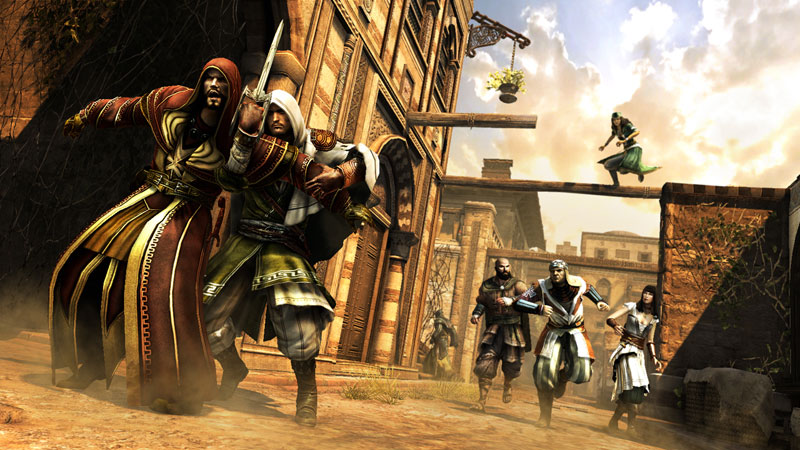
Brotherhood had the potential to ruin the goodwill around the series by including a multiplayer component that could have well been a poor attempt at appealing to a wider market. What we got instead was a unique and exciting multiplayer that matched the single player step by step in quality and uniqueness. This has led many of us at IVG to believe that Ubisoft Montreal is, in fact, a Templar setup that possesses a piece of Eden that controls and compels us to love their product. After all, they have to get it wrong sometime, right? RIGHT? Could the bubble finally burst with the upcoming Assassin’s Creed: Revelations?
The recently concluded multiplayer beta was as good a place as any to start looking for an answer. While every bit as enjoyable as the previous instalment and more, Ubisoft has to tread carefully from here on with some of the design choices. But we’ll get to that later. A short recap for those inexplicably unaware of what to expect from the Assassin’s Creed brand of multiplayer gaming: the players, as part of Abstergo’s Templar training program, are placed on a map, where they must hunt down other human opponents while being hunted themselves. Each human player has a unique appearance, and the rest of the map is populated by AI controlled doppelgangers. The challenge is to recognise your human target, with more stealthy kills rewarded with more points. The game includes multiple individual and team-based modes, and an extensive levelling system.
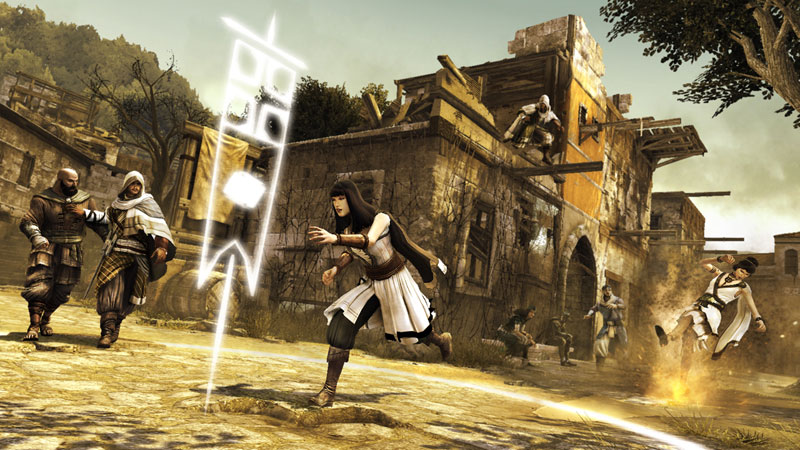
Those who are familiar with it will know that the awesomeness of the multiplayer far exceeds my skill at describing it. And Assassin’s Creed: Revelations aims to build on the established formula. While the core gameplay remains the same, Ubisoft has put in a lot of work in the finer details. The number of kill animations has increased, with different animations for different kinds of kills. In a neat little touch, the more discreet the kill is, the shorter the animation, giving the player those extra precious moments to make an escape, should his or her hunter be nearby. The movement and climbing also feels a touch smoother than the previous instalment, improving the pace at which the game progresses.
The biggest addition comes in the form of new game modes. Apart from Wanted and Manhunt, which were available in Brotherhood, the beta had three new game modes – Deathmatch, Team Deathmatch, and Artifact Assault. Deathmatch is a no-frills version of Wanted – the staple game mode of Assassin’s Creed multiplayer. The match happens in a small segment of the larger map available in other game modes, and each player retains their unique appearance even among the AI characters, making them easy to spot for their hunter. Easy Deathmatch simplifies things even further, by disabling all abilities. Artifact Assault is a team-based mode that is Assassin’s Creed’s take on capture the flag.
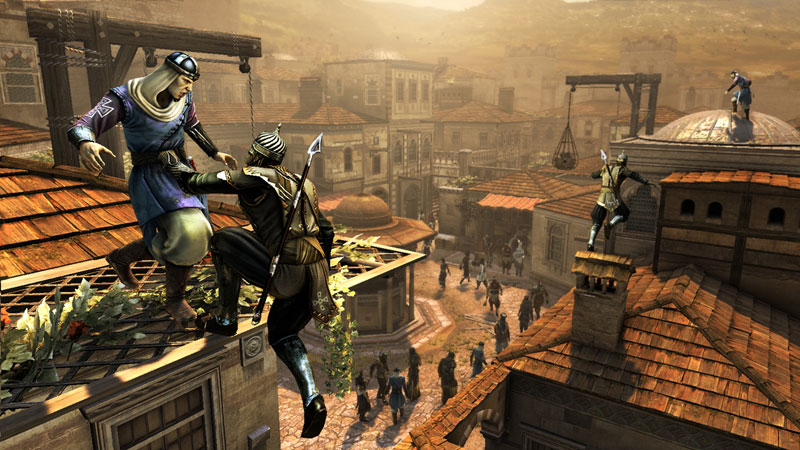
While the addition of new game modes is always welcome, it is the changes to some of the core mechanics that is causing a great deal of debate within the community. Anyone who participated in the beta would have noticed a few games in that it is much easier to stun your opponent now than it was in Brotherhood. The increased stun radius is a clear attempt at making the multiplayer more accessible to newcomers by giving them a better chance against more experienced hunters. While this in itself is something that players can easily adapt to over time, the increased stun window in conjunction with the reverse detection meter (RDM) is a questionable design decision.
The multiplayer has always emphasized quality over quantity, with the player with the ‘best’ kills often outscoring the player with the ‘most’ kills. The quality is judged by how silent a player is when taking out his target. A measured, silent approach is rewarded more than losing your nerves and making a run for your target (which also alerts him to your presence). The system worked very well in Brotherhood. In Revelations, the RDM starts off as discreet. In order to maximize your points, the hunter must stalk his target a bit to build up the meter to incognito, which would yield the maximum points. While a good system in theory, a wider stun radius, coupled with the fact that most people only need half an excuse to start running makes it very difficult to stalk one’s target. There are some checks in place. For example, it is now possible to stun civilians, making it infeasible for the player to keep hammering on the stun button.
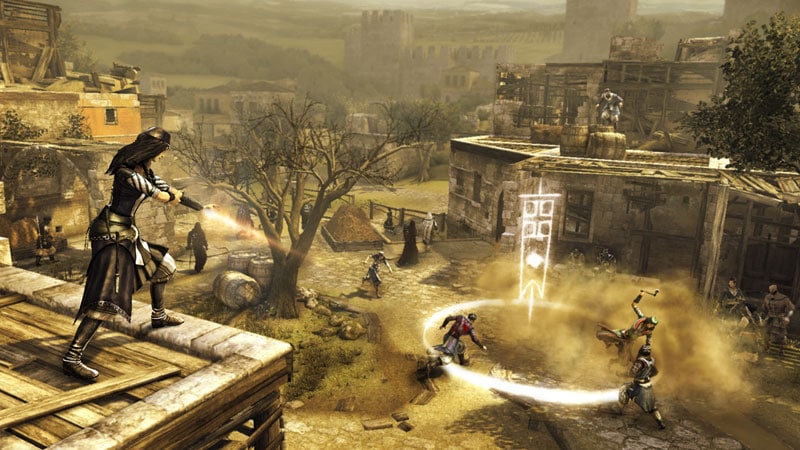
But as it is now, this change still works against stealth play to some extent, which lies at the core of the game’s multiplayer. Understandably, fans of the previous game aren’t very happy, and the inclusion of contested kills only rubs salt in their wounds. These happen when the target and the hunter press the stun and the kill button almost at the same time, giving the hunter 150 points and the target 50 points. There are different ways to deal with these concerns, either by reducing the stun radius, or making the RDM fill faster, or maybe a bit of both. Alternatively, they could just let it be and see how well it works for them.
My other major complaint during the beta was the cluttered and user-unfriendly menus. A lot of things, such as Abstergo credits and friend points, are mostly unexplained, and there is no clear indication of how the player would progress through the ranks. Progression is also different now. At the end of each game, the player earns points and Abstergo credit, with the former unlocking new items and the latter required to purchase them before they can be used. It is an interesting system, meant to bring about variation even among players of the same rank. The amount of Abstergo credits earned in a game is also linked to performance, though not in the same proportion as points. This means that a player who performs consistently well will be able to afford more abilities and perks than someone who’s headless-chickened his way up to the same rank. The Abstergo credits also extend to personalization, opening up multiple options for player-created emblems.
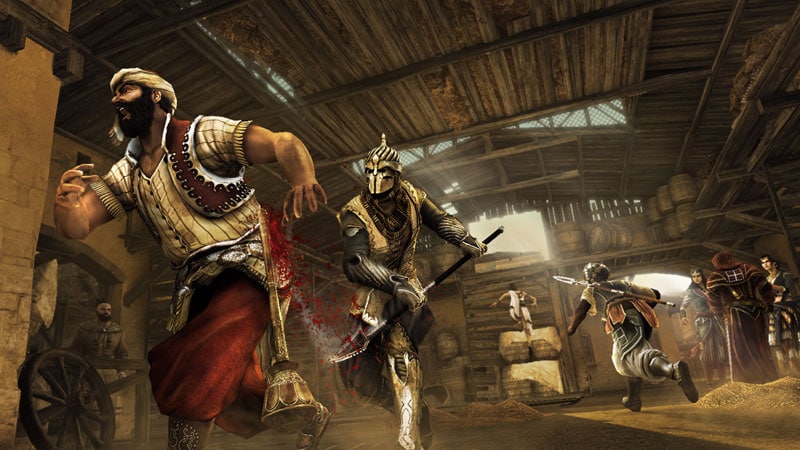
With excellent maps that complement both ground and rooftop gameplay, an expanded and improved roster of abilities and perks, new game modes, inclusion of clans (known as guilds), and the promise of deeper integration of story elements, the multiplayer component of Assassin’s Creed: Revelations is shaping up well. However, the core gameplay has to make up its mind about where its loyalties lie – with the seasoned assassins or the ones with the itchy feet syndrome, or the hallowed sweet spot between the two that Ubisoft Montreal has so far struggled to hit. This is especially relevant after such emphatic community feedback. The success of the multiplayer may well ride upon it.
Assassin’s Creed: Revelations is scheduled for release on November 15, 2011 for Xbox 360, PS3. and PC.


